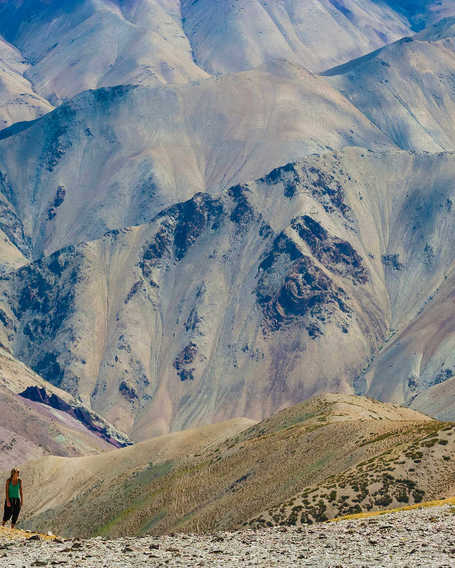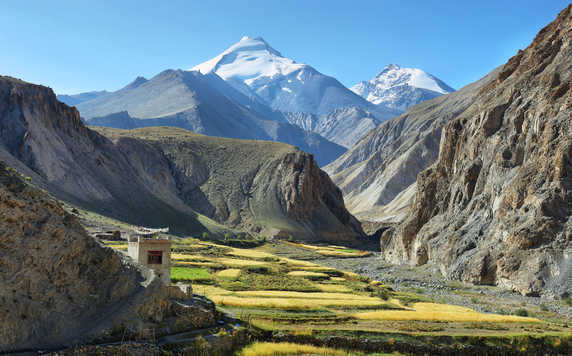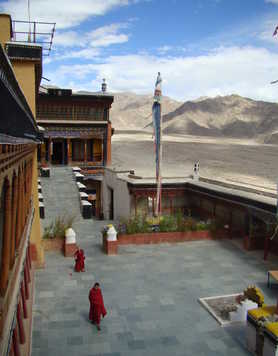
Leh
Nowhere else in the world would it be described as bustling, however in this remote wilderness, Leh's enchanting stupas and white-washed houses set amongst narrow streets provide an urban patchwork of humanity amidst an otherwise majestic, natural landscape. The colourful alley ways leading to a vibrant bazaar are the perfect place to start your exploration of Ladakh. Chat with the friendly locals, pickup a few words of the language whilst acclimatising to the altitude, particularly if you have arrived by air. If you up to exploring, venture into the alleyways behind the beautiful Jama Masjid and tunnel your way under a maroon door marked 'Chamba Gonba' before winding up a rocky path to the Old Town Cafe and Leh Palace. Here you will find incredible views over the town and the Indus Valley.





























